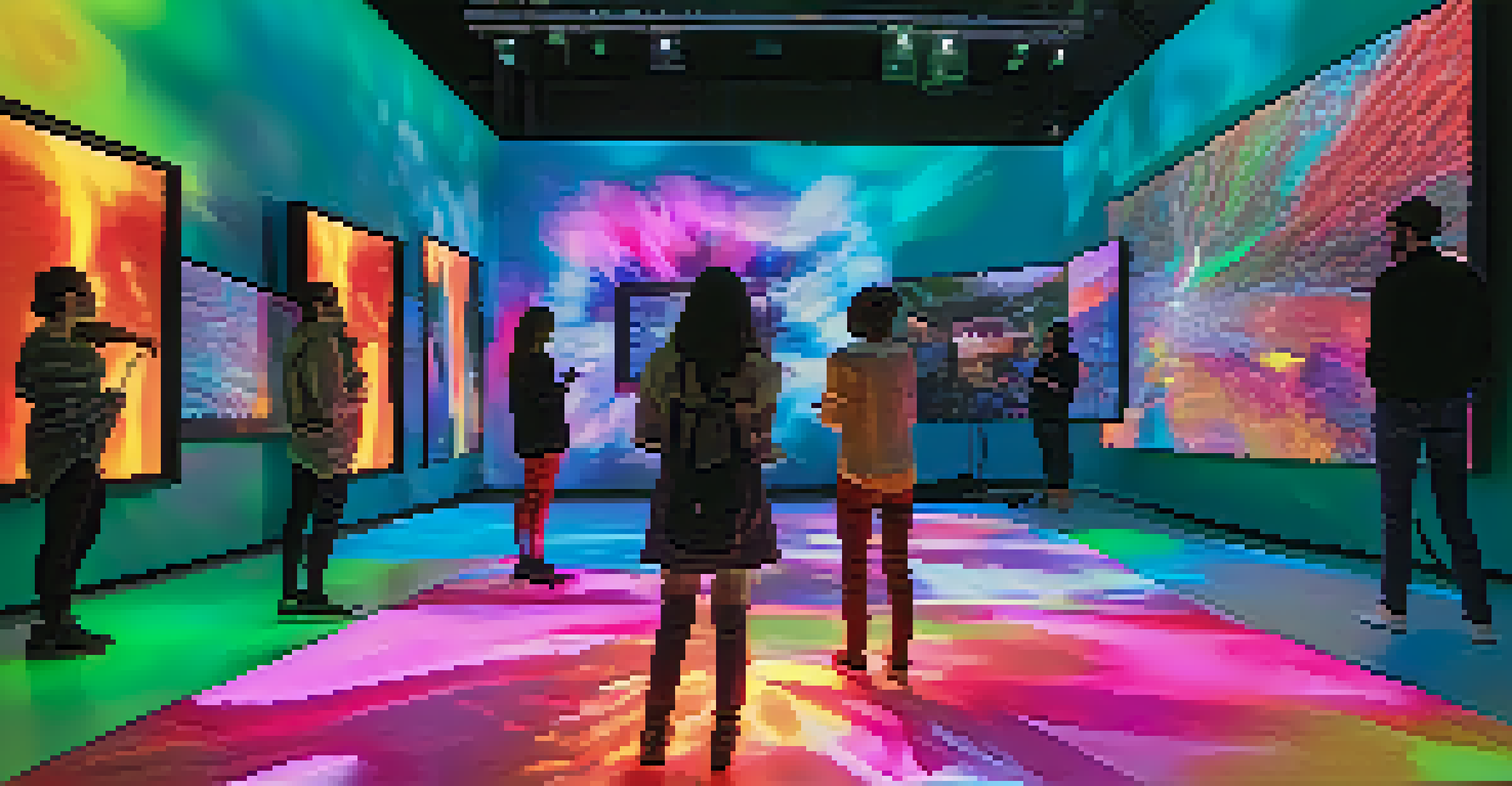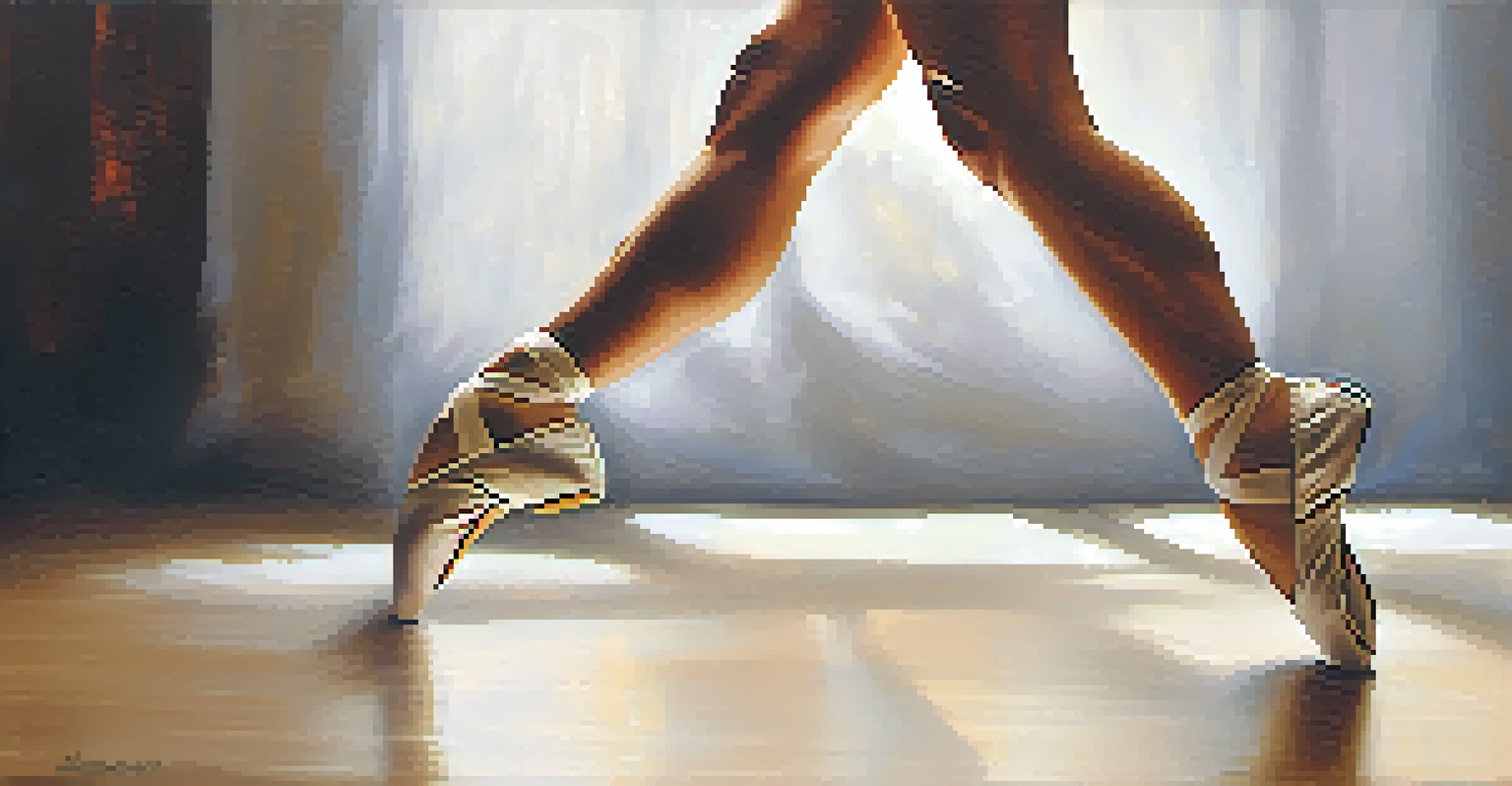Performance Art: Redefining Dance Through Audience Engagement

Understanding Performance Art and Its Unique Approach
Performance art is an innovative form of artistic expression that blends various disciplines, including dance, theater, and visual arts. Unlike traditional dance performances, which often have a set structure and predetermined choreography, performance art invites spontaneity and audience interaction. This fluidity allows for a more organic experience, where the boundaries between performer and spectator blur, creating a shared space for exploration.
Art is not a mirror held up to reality, but a hammer with which to shape it.
At its core, performance art emphasizes the act of doing rather than simply showcasing a finished product. It often challenges conventions and prompts viewers to engage with the work on a deeper level. This interaction can evoke a range of emotions, from joy to discomfort, as audiences are encouraged to reflect on their own experiences and perceptions during the performance.
By redefining dance through the lens of performance art, artists can create immersive experiences that resonate with audiences in unexpected ways. This approach not only enriches the art form but also encourages a dialogue between the performer and the audience, fostering a sense of community and shared understanding.
The Role of Audience Engagement in Performance Art
Audience engagement is a cornerstone of performance art, transforming passive viewers into active participants. This interaction can take many forms, from inviting spectators to join in the dance to incorporating their responses into the performance itself. Such engagement breathes life into the work, making each performance a unique experience shaped by the people present.

For example, a performance might start with dancers inviting audience members to share their thoughts or emotions related to a theme, which the dancers then interpret through movement. This creates a dynamic loop of inspiration where the audience feels a sense of ownership over the performance. The resulting energy often enhances the impact of the dance, making it more memorable and resonant.
Audience Engagement Redefines Art
Performance art transforms audiences from passive observers into active participants, enhancing the emotional impact of each performance.
Moreover, these participatory elements can break down barriers between the audience and performers, fostering a deeper connection. As viewers become more involved, they are likely to reflect on their own perceptions of art, movement, and community, enriching the overall experience for everyone involved.
Examples of Successful Audience-Interactive Performances
Several renowned performance artists have successfully integrated audience engagement into their work, illustrating the power of this approach. For instance, the artist Marina Abramović’s piece 'The Artist Is Present' invited viewers to sit silently across from her, creating an intimate exchange that challenged traditional notions of performance. The emotional weight of these encounters transformed the experience for both Abramović and her audience, demonstrating how interaction can deepen the art form.
The role of the artist is to make the revolution irresistible.
Similarly, the dance company Punchdrunk is known for its immersive performances that encourage audience members to explore the space and interact with both the environment and the performers. By allowing viewers to roam freely and engage with the narrative, Punchdrunk creates a unique tapestry of experiences, ensuring that no two performances are alike. This sense of agency empowers the audience, making them integral to the storytelling process.
These examples highlight how audience engagement can elevate performance art and dance, creating a vibrant dialogue that enriches both the art and the viewer’s experience. Such innovative approaches challenge the status quo and invite audiences to reconsider their role in the artistic process.
How Performance Art Challenges Traditional Dance Norms
Performance art disrupts traditional dance norms by questioning established practices and exploring new possibilities. In many classical forms of dance, the focus is placed on technique and execution, often sidelining the audience's emotional involvement. Performance art flips this on its head, prioritizing engagement and shared experience over mere perfection.
This shift encourages dancers to experiment with movement and expression, allowing for a more authentic portrayal of their thoughts and feelings. By embracing imperfection and spontaneity, performers can connect with their audience on a more profound level, creating a sense of vulnerability and honesty. These elements are often what resonate most deeply with viewers.
Technology Enhances Interaction
Digital tools and platforms are reshaping how audiences engage with performance art, making experiences more accessible and interactive.
As more dance artists adopt performance art principles, the landscape of dance continues to evolve. This evolution not only enriches the art form but also invites audiences to become co-creators, fostering a culture of collaboration that transcends traditional boundaries.
The Impact of Technology on Audience Engagement
In our increasingly digital world, technology plays a significant role in redefining audience engagement in performance art. From live streaming performances to interactive apps, artists are leveraging technology to reach wider audiences and enhance the spectator experience. These tools not only make art more accessible but also create opportunities for real-time interaction, further blurring the lines between performer and viewer.
For instance, virtual reality (VR) installations allow audiences to immerse themselves in a digital performance space, where they can influence the narrative and engage with the art in unprecedented ways. This kind of interactivity fosters a deeper connection, as participants feel they are not just observing but are part of the artistic creation.
Moreover, social media platforms provide a space for audiences to share their experiences and reactions, creating a community around the performance. This digital engagement extends the life of the art beyond the physical space, allowing for ongoing conversations about the work and its themes.
The Future of Dance in Performance Art
As we look to the future, it’s clear that performance art will continue to shape the landscape of dance. The blending of disciplines encourages artists to push boundaries and explore new forms of expression, ultimately enriching the cultural tapestry. This evolution is not just a trend; it reflects a growing desire for authentic connections and shared experiences in an increasingly fragmented world.
Moreover, as more artists experiment with audience engagement, we can expect to see a broader range of styles and interpretations emerge. This diversity will not only enhance the richness of performance art but also invite more people to participate, expanding the audience base and fostering a deeper appreciation for the art form.
Performance Art Evolves Dance
By incorporating elements of performance art, traditional dance is evolving to prioritize authenticity and shared experiences over technical perfection.
In essence, the future of dance lies in its ability to adapt and evolve, embracing new ideas and technologies that encourage audience involvement. This journey promises to redefine how we experience and understand dance, making it a vibrant, collective art form that resonates with all.
Conclusion: Embracing the Evolution of Dance Through Engagement
In conclusion, performance art is redefining dance by weaving audience engagement into its very fabric. This transformation not only enhances the emotional depth of performances but also fosters a sense of community and shared experience. As artists continue to experiment with interactive elements, they challenge us to reconsider our roles as spectators and participants in the art world.
The evolution of dance through performance art invites us to embrace new perspectives and explore the myriad ways we can connect with art. Whether through technology, spontaneity, or direct interaction, the lines between performer and audience blur, creating a richer, more inclusive experience.

As we move forward, let us celebrate and support this evolution, recognizing the transformative power of performance art to engage, inspire, and unify. The future of dance is bright, and it begins with each of us stepping into the performance space.